Medical student letter of recommendation template
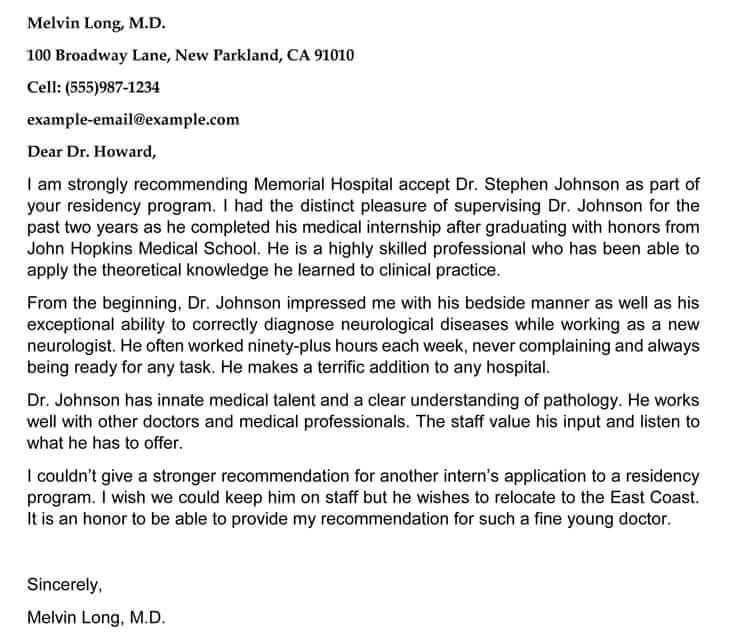
A letter of recommendation for a medical student plays a critical role in highlighting their unique qualifications and experiences. As someone who has had the privilege of working closely with the student, it is important to focus on specific traits that demonstrate their dedication, skills, and potential for success in the medical field. In your letter, emphasize how the student excels in clinical settings, showcases strong communication abilities, and possesses a commitment to patient care that stands out.
Begin by detailing your professional relationship with the student. Describe the duration and context of your interaction, such as whether you supervised them in a clinical rotation or mentored them in a research project. This provides the reader with a clear understanding of your capacity to assess their skills. Highlight their clinical knowledge, decision-making abilities, and ability to apply theoretical concepts in real-world settings. Share specific examples that show their proactive nature and problem-solving skills in high-pressure situations.
Next, focus on the student’s interpersonal skills. Medical professionals need to communicate effectively with patients, families, and colleagues. Offer examples of the student’s ability to work within a team, manage conflict, and empathize with patients. This is an area that sets top medical students apart, as it shows their readiness for patient-centered care. Conclude the letter with your strong recommendation, emphasizing how the student’s attributes make them an excellent candidate for medical school or residency programs.
Medical Student Letter of Recommendation Template
When writing a letter of recommendation for a medical student, focus on key attributes and skills that demonstrate their ability to succeed in the medical field. Highlight their academic achievements, clinical performance, and interpersonal skills. Below is a template that can guide you in crafting a personalized and impactful letter.
Start by addressing the letter to the appropriate recipient:
- Salutation: “Dear [Admissions Committee/Dr. Last Name],”
Begin the letter by introducing yourself and your professional relationship with the student. Mention your role, your experience, and how long you have known the student:
- Introduction: “I am [Your Full Name], [Your Position], at [Institution]. I have had the pleasure of working with [Student’s Name] for [Time Period] in [Context], and I have been thoroughly impressed by their dedication and abilities.”
In the next section, provide specific examples of the student’s strengths, such as their academic capabilities, clinical skills, and work ethic. These examples should give the reader a clear understanding of why the student excels:
- Academic Performance: “Throughout their coursework, [Student’s Name] consistently demonstrated a strong understanding of the material. They excelled in [Specific Courses or Areas] and were recognized for their analytical thinking and problem-solving abilities.”
- Clinical Skills: “In clinical settings, [Student’s Name] showed remarkable proficiency in diagnosing and treating patients. They worked effectively under pressure and communicated well with patients and the healthcare team.”
- Work Ethic and Team Collaboration: “Beyond their academic achievements, [Student’s Name] contributed meaningfully to group projects and demonstrated leadership when collaborating with peers.”
Discuss the student’s character and qualities that make them a great candidate for medical school:
- Personal Traits: “[Student’s Name] is a compassionate, empathetic, and ethical individual. They consistently demonstrate a deep commitment to improving patient care and take initiative in learning.”
End the letter with a strong recommendation, offering your full support for the student’s application:
- Conclusion: “I am confident that [Student’s Name] will thrive in the challenging and rewarding environment of medical school. I give my highest recommendation for their admission and I am certain they will be an asset to your program.”
Finally, close with a professional sign-off and offer to provide further information if necessary:
- Closing: “Sincerely, [Your Full Name], [Your Title], [Your Institution]”
Understanding the Importance of a Strong Letter
A well-crafted letter of recommendation significantly impacts a medical student’s application, providing a personal perspective that can’t be found in academic records alone. When writing such a letter, focus on specific achievements, characteristics, and contributions of the student that make them stand out. Highlight their commitment to the field, problem-solving abilities, and capacity for empathy–qualities that are crucial in a medical career.
Discuss how the student has demonstrated leadership, resilience, and teamwork in challenging situations. Real-life examples from clinical experiences or volunteer work offer a genuine insight into their potential. Be clear about the student’s growth, showing their trajectory and readiness for the next step in their education.
A letter that provides concrete examples of the student’s abilities and growth is much more compelling than vague praise. By describing how the student has impacted others, whether through academic excellence or interpersonal skills, the letter serves as a strong endorsement of their readiness for the demands of medical school.
Each letter should be unique and tailored to the student’s personal strengths. It’s not just about listing qualities but about telling a story that supports their qualifications. A strong letter of recommendation can be the deciding factor in their future success in the medical field.
Key Elements to Include in the Letter
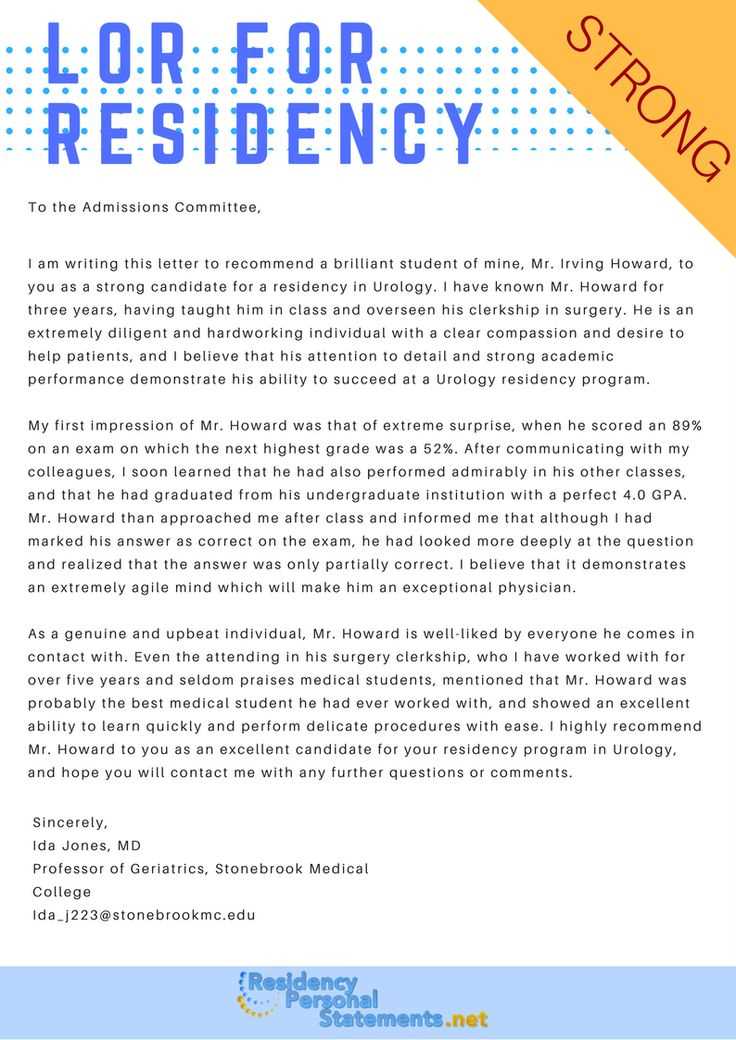
Focus on the student’s academic achievements and clinical skills. Highlight their ability to grasp complex medical concepts, and their performance during clinical rotations. Describe how they approach patient care, whether they demonstrate empathy, communication skills, and professionalism in real-life settings. Provide specific examples of their contributions in a clinical or academic environment to add weight to the letter.
Also, mention their ability to collaborate with a healthcare team. Discuss how the student interacts with peers, faculty, and staff, particularly in high-pressure situations. This shows their adaptability and teamwork skills. Additionally, if the student has shown leadership potential, provide clear examples of how they took initiative or guided others during projects or clinical duties.
Include any extracurricular activities or research involvement that further showcase their dedication to the field. If the student has participated in research, mention the impact of their work, and the skills they gained, especially if it relates to patient care or advancing medical knowledge.
Finally, assess their future potential. Discuss their long-term commitment to medicine, their capacity for growth, and how they are likely to succeed in residency and beyond. Emphasize the qualities that will make them an asset to any medical institution.
How to Highlight Academic and Clinical Achievements
Focus on specific grades, honors, and awards that demonstrate the student’s dedication and capability in both academics and clinical settings. Mention top scores in challenging subjects like anatomy, pathology, or pharmacology. Include any notable scholarships or recognition received for academic excellence. These details provide concrete evidence of the student’s competence.
In clinical settings, emphasize significant accomplishments such as successful patient interactions, leadership in clinical rotations, and involvement in research projects. Highlight instances where the student demonstrated strong diagnostic skills or contributed to patient care in meaningful ways. Providing examples of the student’s teamwork and communication skills in clinical settings can further illustrate their readiness for medical practice.
Incorporate any clinical procedures or techniques the student has mastered, such as performing physical exams or interpreting lab results. Be specific about the student’s involvement in clinical procedures, making sure to highlight their ability to handle responsibility and apply knowledge in real-world scenarios.
Link academic and clinical achievements by demonstrating how the student’s academic strengths enhance their clinical performance. Mention how their solid grasp of medical theory supports their clinical decision-making, contributing to positive patient outcomes and collaborative teamwork.
Demonstrating Leadership and Teamwork Qualities
When recommending a medical student for their leadership and teamwork qualities, focus on specific instances where they successfully led a group or collaborated effectively within a team. Describe how they took initiative during challenging situations, displayed clear decision-making skills, and ensured that all team members were engaged and contributed meaningfully.
Highlight their ability to delegate tasks appropriately, balancing individual strengths within the team. Provide an example where they helped resolve conflicts or maintained a positive, cooperative atmosphere, demonstrating emotional intelligence and maturity. Show how their leadership style was inclusive and focused on achieving collective goals.
Emphasize how they navigated diverse team dynamics, valuing the input of others while maintaining a clear vision for the team’s objectives. Their ability to listen actively, respect differing opinions, and motivate peers under pressure is a key indicator of strong leadership and teamwork capabilities.
Crafting a Personal and Convincing Tone
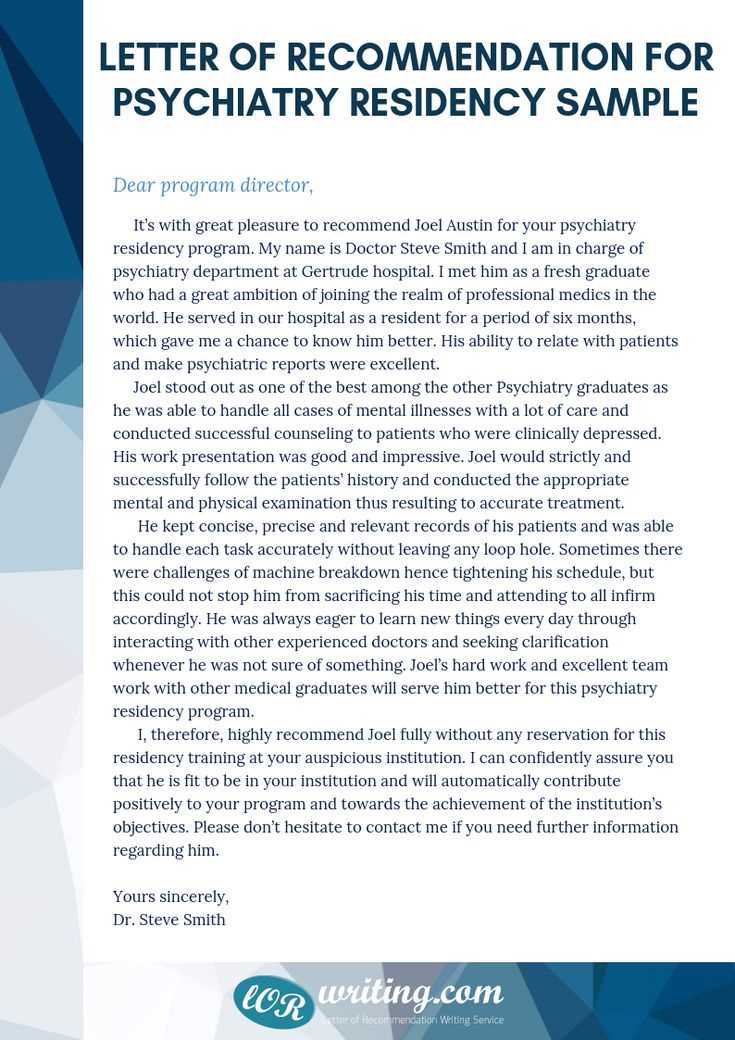
Focus on showcasing the student’s unique strengths. Instead of using generic statements, incorporate specific examples of their performance. For instance, highlight their ability to manage difficult situations or how they demonstrated leadership skills during rotations. These personalized insights will create a more authentic portrayal.
Be Specific with Examples
Rather than stating that the student is “dedicated,” describe how their commitment stood out in practical situations. For example, mention their initiative to help peers during high-pressure scenarios or how they went the extra mile to learn more about a challenging diagnosis. Real-world examples speak louder than vague qualities.
Use a Friendly, Approachable Tone
Acknowledge the student’s human side by mentioning their positive interactions with patients and colleagues. A letter with a touch of warmth shows that the student isn’t just academically capable but also someone who is easy to work with in a healthcare setting. This personal connection can be a deciding factor for selection committees.
| Strength | Example |
|---|---|
| Commitment | Consistently stayed after hours to assist with complex cases, ensuring thorough care for patients. |
| Leadership | Led a team during a medical emergency, calmly delegating tasks and ensuring everyone stayed focused. |
| Empathy | Listened attentively to patients’ concerns, making them feel heard and cared for during stressful situations. |
Final Review and Adjustments for Impact
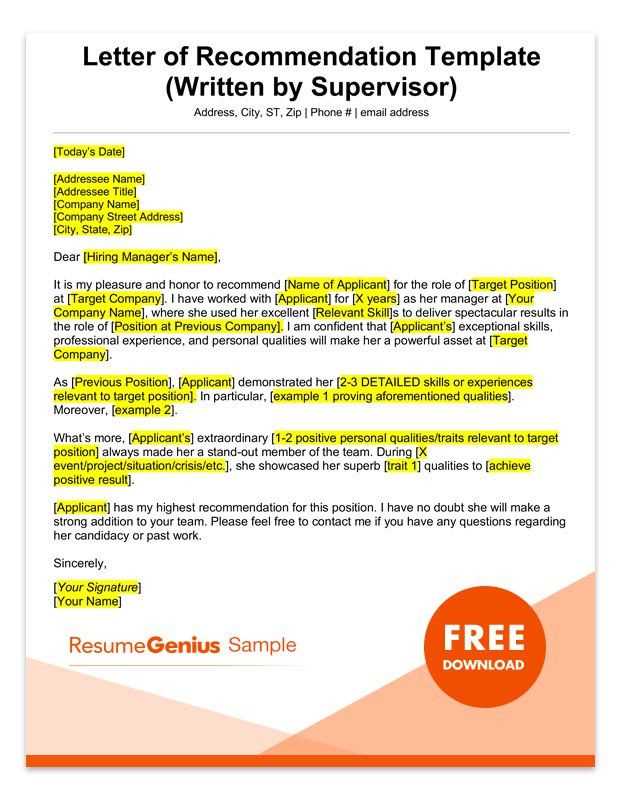
Review the letter with a sharp focus on clarity and coherence. Ensure each point about the student’s skills and experiences is backed by specific examples. Remove any ambiguous language and replace it with concrete details that demonstrate their abilities. If the student’s achievements are mentioned, tie them directly to how those qualities will contribute to their future success in medicine.
Refine Language for Precision
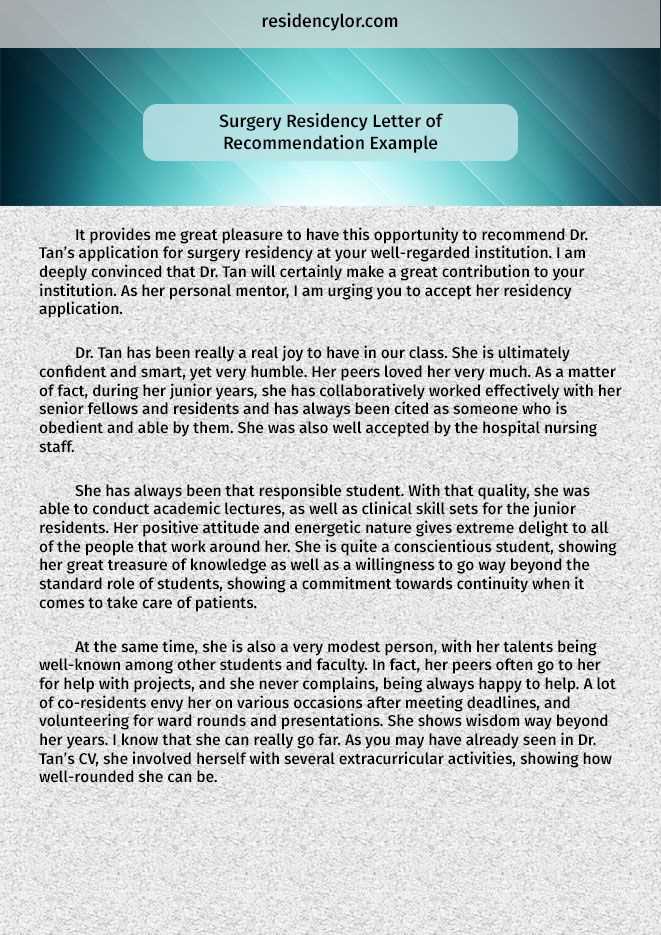
Trim unnecessary words. Phrases like “has worked hard” or “very dedicated” can be replaced with specific accomplishments that show the student’s commitment. Highlight moments where the student demonstrated leadership, initiative, or clinical skills, making sure to be precise and clear in how these qualities were shown. Use action verbs to describe their contributions, such as “led,” “organized,” or “implemented.” This approach adds power and specificity to the letter.
Ensure a Clear Structure
Double-check the flow of the letter. Ensure it transitions smoothly from one point to the next, starting with an introduction of the student’s qualifications, followed by specific examples, and closing with a strong statement of recommendation. The structure should guide the reader through the student’s strengths without any distractions. Each section should complement the other, building a consistent and convincing argument for the student’s potential.